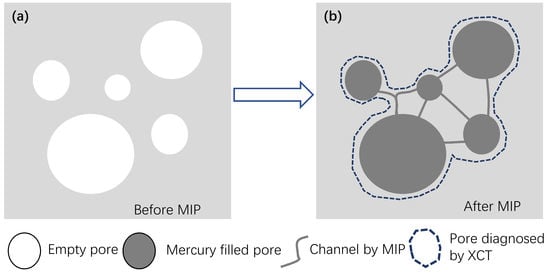Pore Structure Damages in Cement-Based Materials by Mercury Intrusion: A Non-Destructive Assessment by X-Ray Computed Tomography
Abstract
1. Introduction
2. Materials and Experiments
2.1. Materials and Sample Preparation
2.2. MIP Tests
2.3. XCT Tests
3. Results and Discussion
3.1. MIP Outcomes
- Mercury first covered the open cracks, gaps, cavities and irregularities on the sample surfaces in relatively low pressures (termed as the surface conformance effect) [13,32]. Our previous study [13] suggested that the surface conformance effect might not be avoided because these cavities, cracks and flaws can be inevitably induced during sample pretreatments such as cutting and drying [1,15]. However, the volume increases at the very beginning stage of MIP by the surface conformance effect can be mitigated by controlling the exposed areas of the MIP samples [13]. In this study, the surface conformance effect was insignificant for both the paste and mortar samples (<0.005 mL/g).
- Later, almost no mercury intrusion was recorded between 2 m and 100 m (Figure 4). This meant that no open channels (not the pores inside the materials) in such size interval can be recognized by MIP, which was termed as the non-channel stage.
- As the size decreased further, the mercury increases of both the paste and mortar became obvious (Figure 4). Generally, for normally cured cement paste, these increases can be rarely observed [8]. In this study, the very severe drying scheme (105 ) was used, so the microstructure flaws or damages by drying [1] would account for the abnormal mercury rises in this stage. For the mortar sample, the porous ITZs, together with the capillary flaws by drying, were responsible for the higher PSD data (see the shadowed areas shown in Figure 4).
- After that, the intrusion volumes rose rapidly and significantly with obvious peaks around 70 nm (Figure 4). The peak size was identical to the threshold pore size form the percolated pore continuum [29,33,34]. Because of the `ink-bottle’ effect [8], the volumes at or below the threshold size could partially represent the capillaries of the interparticle space that remained unfilled by cement hydration. Compared with the mortar sample, the paste sample showed the faster raising rate and higher peak intensity because of the higher capillary pores.
- Under the higher pressures, the mercury rising rates became slower and the differential PSDs were depressed (Figure 4) because only limited space (mainly gel pores) was available to accommodate the mercury after the capillaries were filled. Since the MIP parameters in nano scales remained debatable [11,18], those data would not shed much light on gel pore characterization.
3.2. Threshold Analysis
3.3. Characteristics of XCT Results
3.4. Damage Diagnosis
3.5. Further Discussion
4. Conclusions
- XCT is a powerful technique to non-destructively characterize the microstructure of CBMs. The significant differences in X-ray MACs between mercury and the phases in CBMs can greatly enhance the contrast gradients in XCT images and facilitate the reconstruction of 3D microstructure.
- MIP tests indicated that, compared with the mortar sample, the paste sample had the higher porosity and specific surface area, similar threshold pore size, but lower median pore size. The MIP PSDs of the paste and mortar samples showed the similarly five-stage intrusion curves but the different specific spectra. The drying at 105 brought additional flaws just before the threshold stage to the paste and mortar samples.
- The grey values for the pores and material skeletons in the CBM samples were inversely distributed due to the shifts in X-ray absorptivity when the pores were filled with mercury.
- A threshold analysis indicated that the obtained XCT results showed good reliability and robustness in pore phase segmentation.
- The surfaces of the voids in the paste were rough, while those in the paste were smooth. Mercury intrusion paths along the ITZs around aggregates in the mortar sample were visible in the post-MIP XCT images.
- Mercury intrusion in the paste and mortar samples caused the increases in pore volume and the decreases in pore number as determined by XCT. The results were consistent with those reported in the literature.
Author Contributions
Funding
Conflicts of Interest
References
- Zhang, Z.; Scherer, G.W. Evaluation of drying methods by nitrogen adsorption. Cem. Concr. Res. 2019, 120, 13–26. [Google Scholar] [CrossRef]
- Zuo, Y.; Ye, G. Pore structure characterization of sodium hydroxide activated slag using mercury intrusion porosimetry, nitrogen adsorption, and image analysis. Materials 2018, 11, 1035. [Google Scholar] [CrossRef]
- Washburn, E.W. Note on a method of determining the distribution of pore sizes in a porous material. Proc. Natl. Acad. Sci. USA 1921, 7, 115–116. [Google Scholar] [CrossRef] [PubMed]
- Zeng, Q.; Li, K.; Fen-Chong, T.; Dangla, P. Pore structure characterization of cement pastes blended with high-volume fly-ash. Cem. Concr. Res. 2012, 42, 194–204. [Google Scholar] [CrossRef]
- Zeng, Q.; Li, K.; Fen-Chong, T.; Dangla, P. Surface fractal analysis of pore structure of high-volume fly-ash cement pastes. Appl. Surf. Sci. 2010, 257, 762–768. [Google Scholar] [CrossRef]
- Zeng, Q.; Luo, M.; Pang, X.; Li, L.; Li, K. Surface fractal dimension: An indicator to characterize the microstructure of cement-based porous materials. Appl. Surf. Sci. 2013, 282, 302–307. [Google Scholar] [CrossRef]
- Leóny León, C.A. New perspectives in mercury porosimetry. Adv. Colloid Interface Sci. 1998, 76, 341–372. [Google Scholar] [CrossRef]
- Diamond, S. Mercury porosimetry: An inappropriate method for the measurement of pore size distributions in cement-based materials. Cem. Concr. Res. 2000, 30, 1517–1525. [Google Scholar] [CrossRef]
- Moro, F.; Boehni, H. Ink-Bottle effect in mercury intrusion porosimetry of cement-based materials. J. Colloid Interface Sci. 2002, 246, 135–149. [Google Scholar] [CrossRef]
- Ma, H. Mercury intrusion porosimetry in concrete technology: Tips in measurement, pore structure parameter acquisition and application. J. Porous Mater. 2014, 21, 207–215. [Google Scholar] [CrossRef]
- Muller, A.C.A.; Scrivener, K.L. A reassessment of mercury intrusion porosimetry by comparison with 1H nmR relaxometry. Cem. Concr. Res. 2017, 100, 350–360. [Google Scholar] [CrossRef]
- Dong, H.; Zhang, H.; Zuo, Y.; Gao, P.; Ye, G. Relationship between the Size of the Samples and the Interpretation of the Mercury Intrusion Results of an Artificial Sandstone. Materials 2018, 11, 201. [Google Scholar] [CrossRef] [PubMed]
- Zeng, Q.; Wang, X.; Yang, P.; Wang, J.; Zhou, C. Tracing mercury entrapment in porous cement paste after mercury intrusion test by X-ray computed tomography and implications for pore structure characterization. Mater. Charact. 2019, 151, 203–215. [Google Scholar] [CrossRef]
- Zhang, Y.; Yang, B.; Yang, Z.; Ye, G. Ink-bottle effect and pore size distribution of cementitious materials identified by pressurization–depressurization cycling mercury intrusion porosimetry. Materials 2019, 12, 1454. [Google Scholar] [CrossRef] [PubMed]
- Galle, C. Effect of drying on cement-based materials pore structure as identified by mercury intrusion porosimetry: A comparative study between oven-, vacuum-, and freeze-drying. Cem. Concr. Res. 2001, 31, 1467–1477. [Google Scholar] [CrossRef]
- Zhou, J.; Ye, G.; Breugel, K.V. Characterization of pore structure in cement-based materials using pressurization depressurization cycling mercury intrusion porosimetry (PDC-MIP). Cem. Concr. Res. 2010, 40, 1120–1128. [Google Scholar] [CrossRef]
- Gao, Z.; Hu, Q.; Hamamoto, S. Using multicycle mercury intrusion porosimetry to investigate hysteresis of different porous media. J. Porous Med. 2018, 21, 607–622. [Google Scholar] [CrossRef]
- Wang, S.; Javadpour, F.; Feng, Q. Confinement correction to mercury intrusion capillary pressure of shale nanopores. Sci. Rep. 2016, 6, 20160. [Google Scholar] [CrossRef]
- Shi, D.; Winslow, D.N. Contact angle and damage during mercury intrusion into cement paste. Cem. Concr. Res. 1985, 15, 645–654. [Google Scholar] [CrossRef]
- Feldman, R.F. Pore structure damage in blended cements caused by mercury intrusion. J. Am. Ceram. Soc. 1984, 67, 30–33. [Google Scholar] [CrossRef]
- Olson, R.A.; Neubauer, C.M.; Jennings, H.M. Damage to the pore structure of hardened Portland cement paste by mercury intrusion. J. Am. Ceram. Soc. 1997, 80, 2454–2458. [Google Scholar] [CrossRef]
- Cnudde, V.; Boone, M.N. High-resolution X-ray computed tomography in geosciences: A review of the current technology and applications. Earth-Sci. Rev. 2013, 123, 1–17. [Google Scholar] [CrossRef]
- Promentilla, M.; Cortez, S.; Papel, R.; Tablada, B.; Sugiyama, T. Evaluation of microstructure and transport properties of deteriorated cementitious materials from their X-ray computed tomography (CT) images. Materials 2016, 9, 388. [Google Scholar] [CrossRef] [PubMed]
- Erdem, S.; Gürbüz, E.; Uysal, M. Micro-mechanical analysis and X-ray computed tomography quantification of damage in concrete with industrial by-products and construction waste. J. Clean. Prod. 2018, 189, 933–940. [Google Scholar] [CrossRef]
- Yang, S.; Cui, H.; Poon, C.S. Assessment of in-situ alkali-silica reaction (ASR) development of glass aggregate concrete prepared with dry-mix and conventional wet-mix methods by X-ray computed micro-tomography. Cem. Concr. Compos. 2018, 90, 266–276. [Google Scholar] [CrossRef]
- Buljak, V.; Oesch, T.; Bruno, G. Simulating fiber-reinforced concrete mechanical performance using CT-based fiber orientation data. Materials 2019, 12, 717. [Google Scholar] [CrossRef] [PubMed]
- Fusi, N.; Martinez-Martinez, J. Mercury porosimetry as a tool for improving quality of micro-CT images in low porosity carbonate rocks. Eng. Geol. 2013, 166, 272–282. [Google Scholar] [CrossRef]
- Zeng, Q.; Li, K.; Fen-Chong, T.; Dangla, P. Analysis of pore structure, contact angle and pore entrapment of blended cement pastes from mercury porosimetry data. Cem. Concr. Compos. 2012, 34, 1053–1061. [Google Scholar] [CrossRef]
- Zhou, C.; Ren, F.; Zeng, Q.; Xiao, L.; Wang, W. Pore-size resolved water vapor adsorption kinetics of white cement mortars as viewed from proton nmR relaxation. Cem. Concr. Res. 2018, 105, 31–43. [Google Scholar] [CrossRef]
- Katsura, M.; Sato, J.; Akahane, M.; Kunimatsu, A.; Abe, O. Current and novel techniques for metal artifact reduction at CT: Practical guide for radiologists. Radiographics 2018, 38, 450–461. [Google Scholar] [CrossRef]
- National Institute of Standards and Technology. Available online: https://physics.nist.gov/PhysRefData/FFast/html/form.html (accessed on 11 May 2019).
- Peng, S.; Zhang, T.; Loucks, R.G.; Shultz, J. Application of mercury injection capillary pressure to mudrocks: Conformance and compression corrections. Mar. Pet. Geol. 2018, 88, 30–40. [Google Scholar] [CrossRef]
- Katz, A.J.; Thompson, A.H. Quantitative prediction of permeability in porous rock. Phys. Rev. B 1986, 34, 8179. [Google Scholar] [CrossRef] [PubMed]
- Zhou, C.; Ren, F.; Wang, Z.; Chen, W.; Wang, W. Why permeability to water is anomalously lower than that to many other fluids for cement-based material? Cem. Concr. Res. 2017, 100, 373–384. [Google Scholar] [CrossRef]
- Wang, Z.; Zeng, Q.; Wang, L.; Li, X.; Xu, S.; Yao, Y. Characterizing frost damages of concrete with flatbed scanner. Constr. Build. Mater. 2016, 102, 872–883. [Google Scholar] [CrossRef]
- Hiller, J.; Hornberger, P. Measurement accuracy in X-ray computed tomography metrology: Toward a systematic analysis of interference effects in tomographic imaging. Precis. Eng. 2016, 45, 18–32. [Google Scholar] [CrossRef]
- Gajewicz, A.M.; Gartner, E.; Kang, K.; McDonald, P.J.; Yermakou, V. A 1H nmR relaxometry investigation of gel-pore drying shrinkage in cement pastes. Cem. Concr. Res. 2016, 86, 12–19. [Google Scholar] [CrossRef]
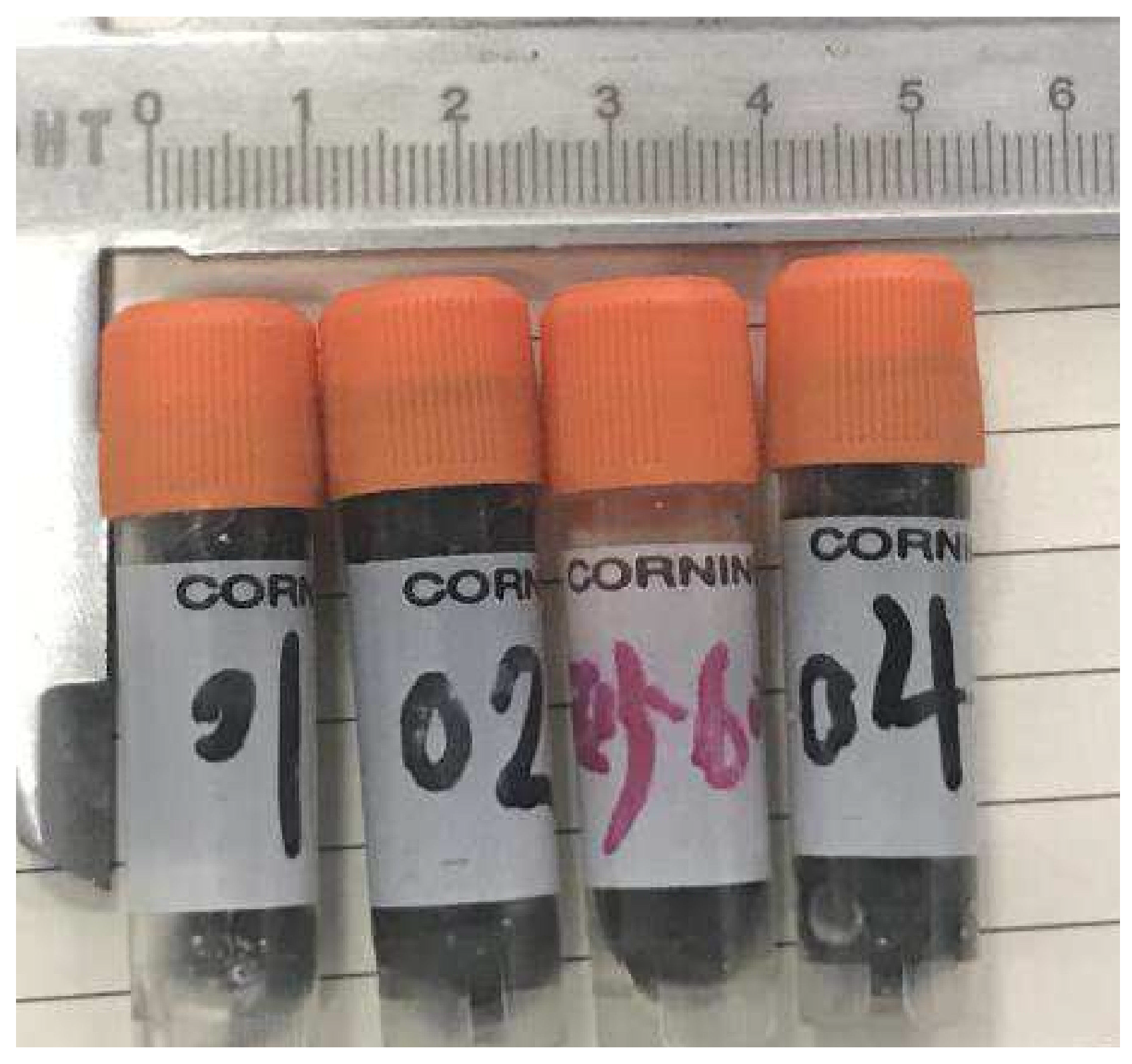
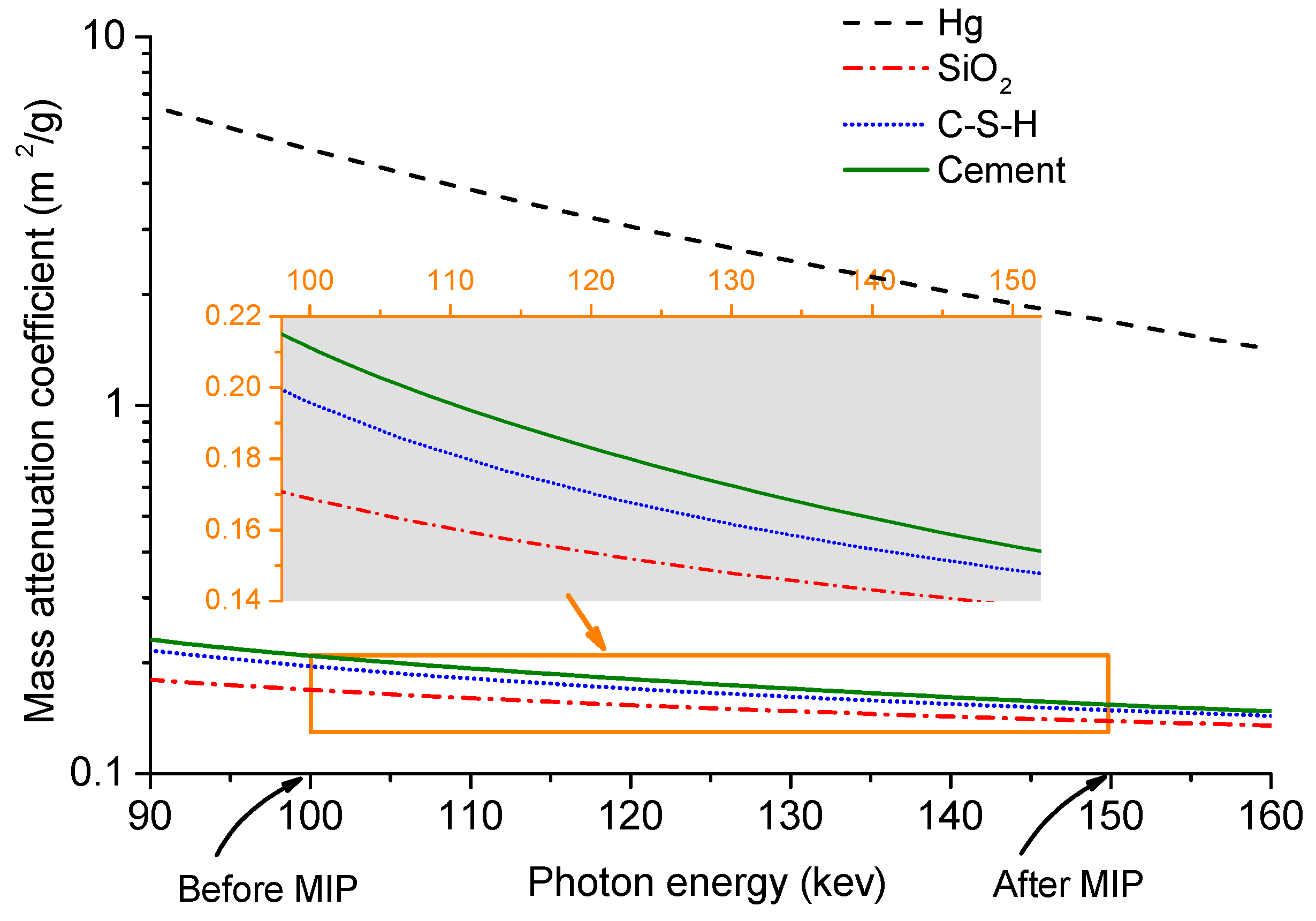
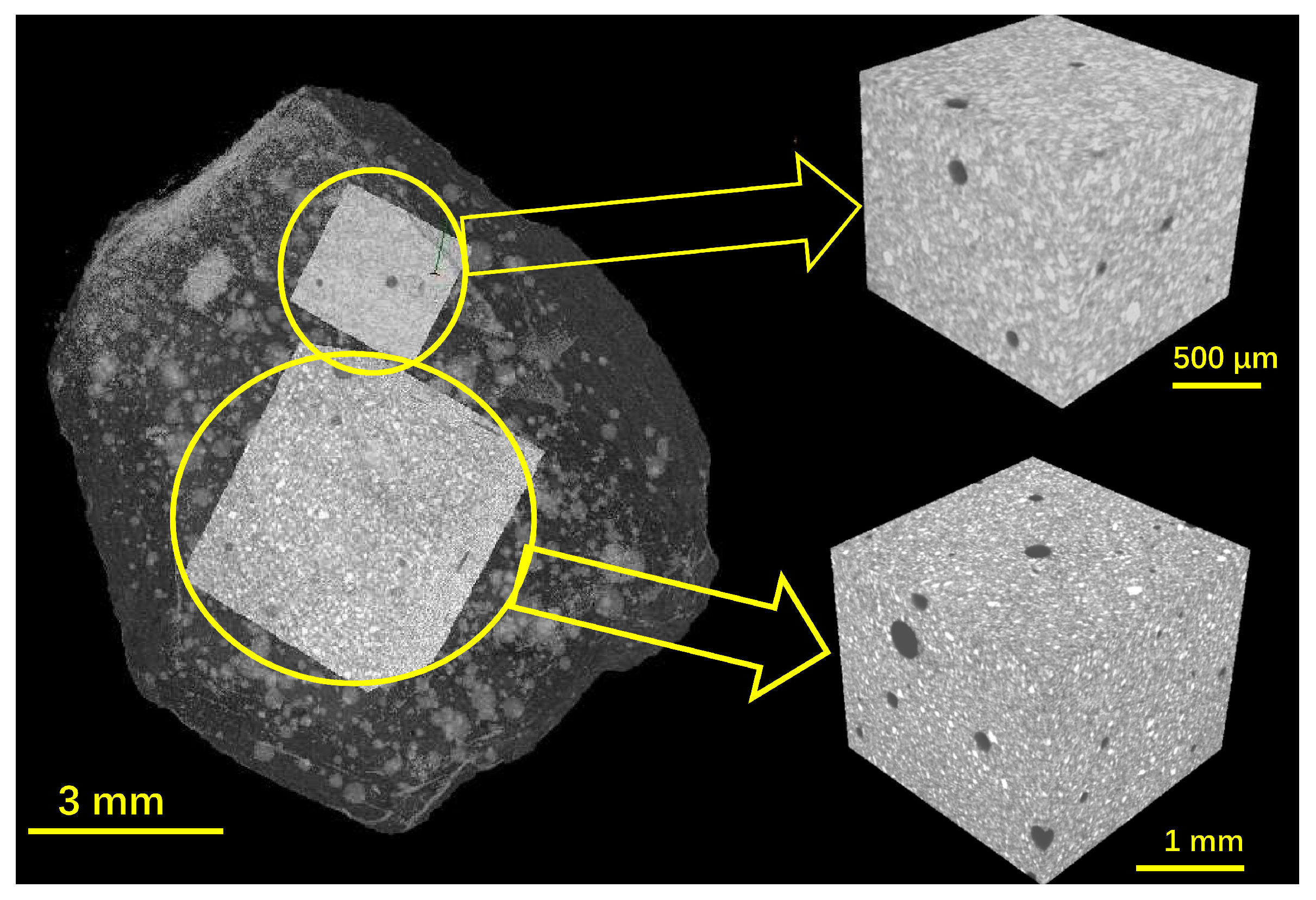
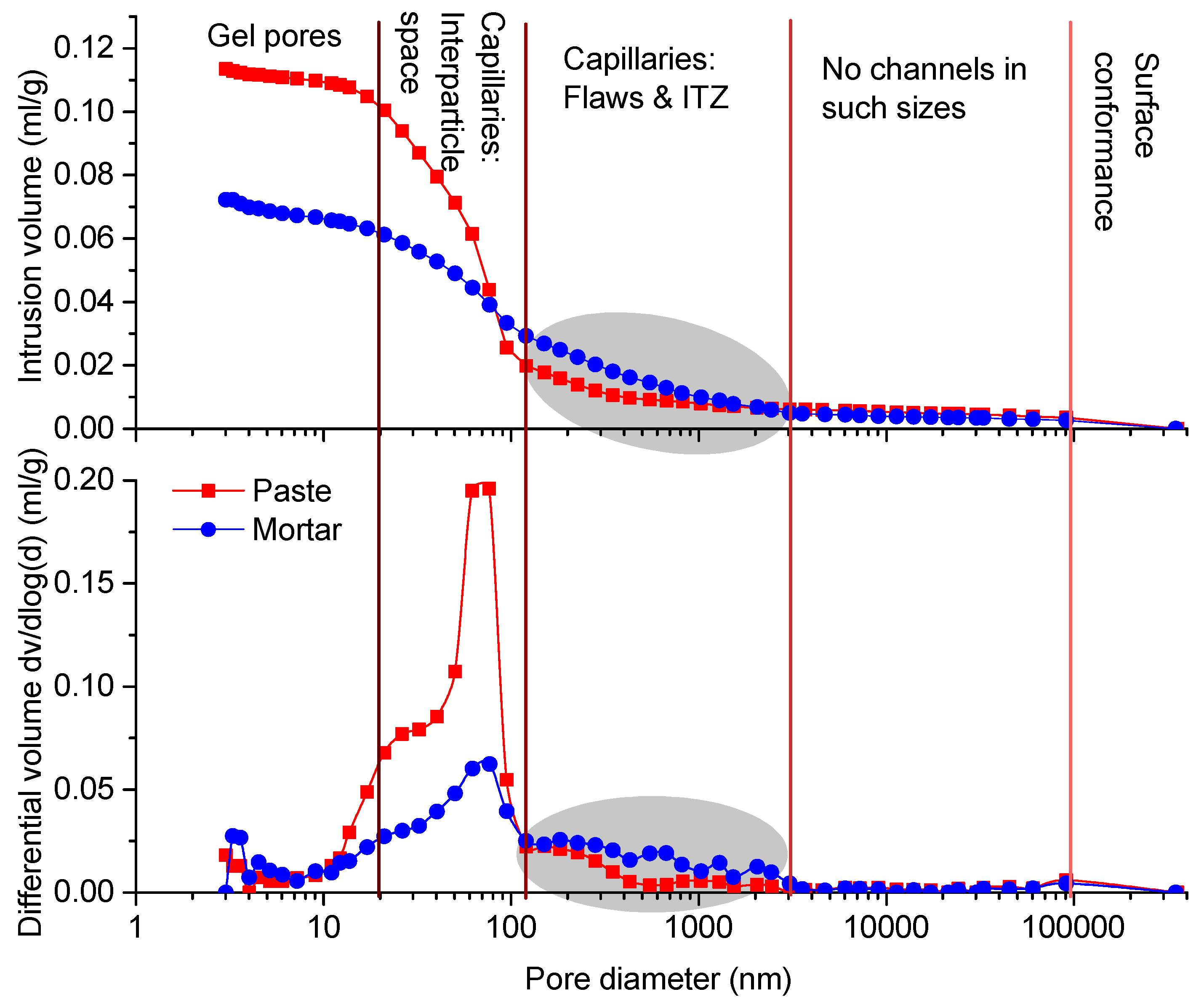
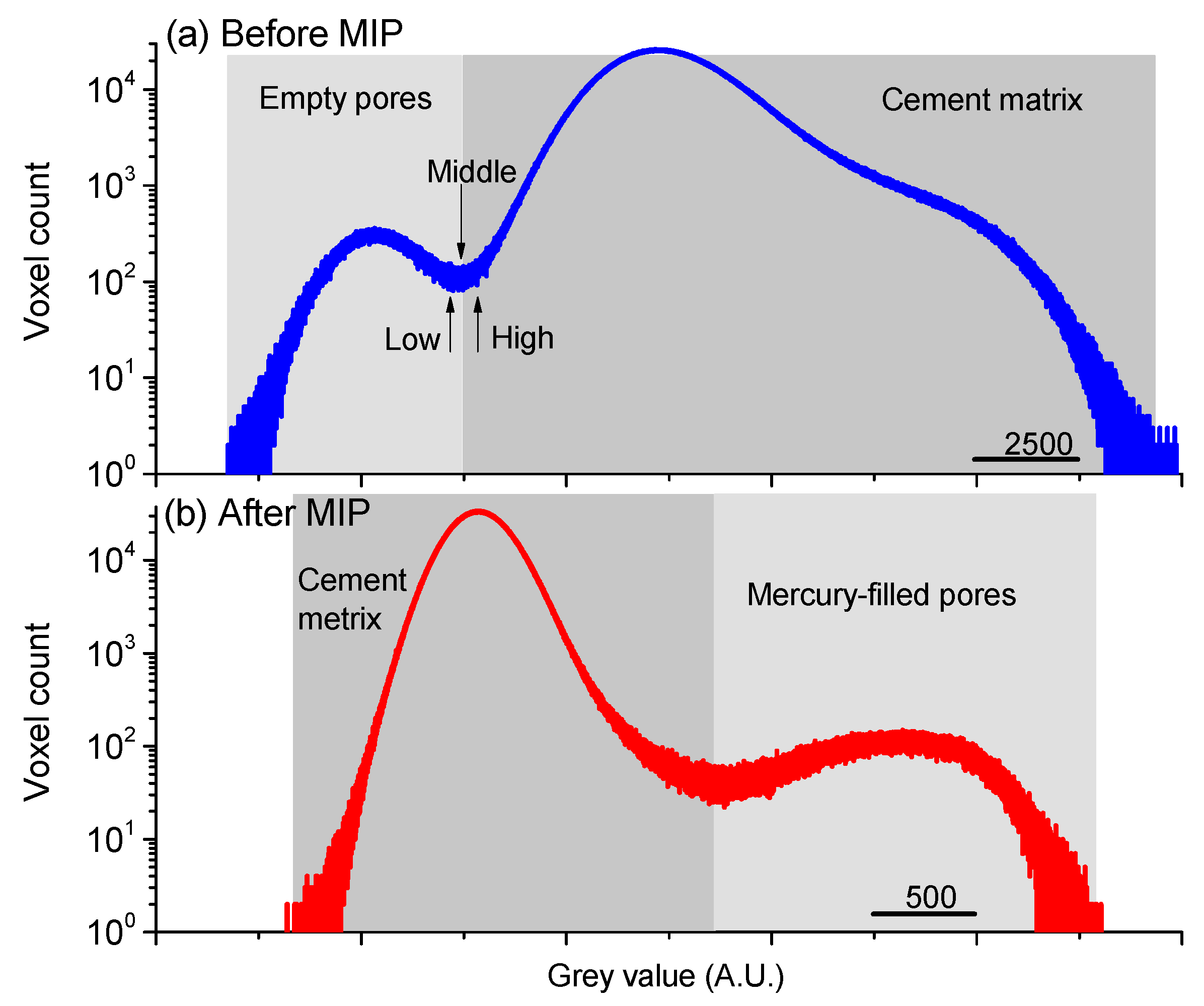

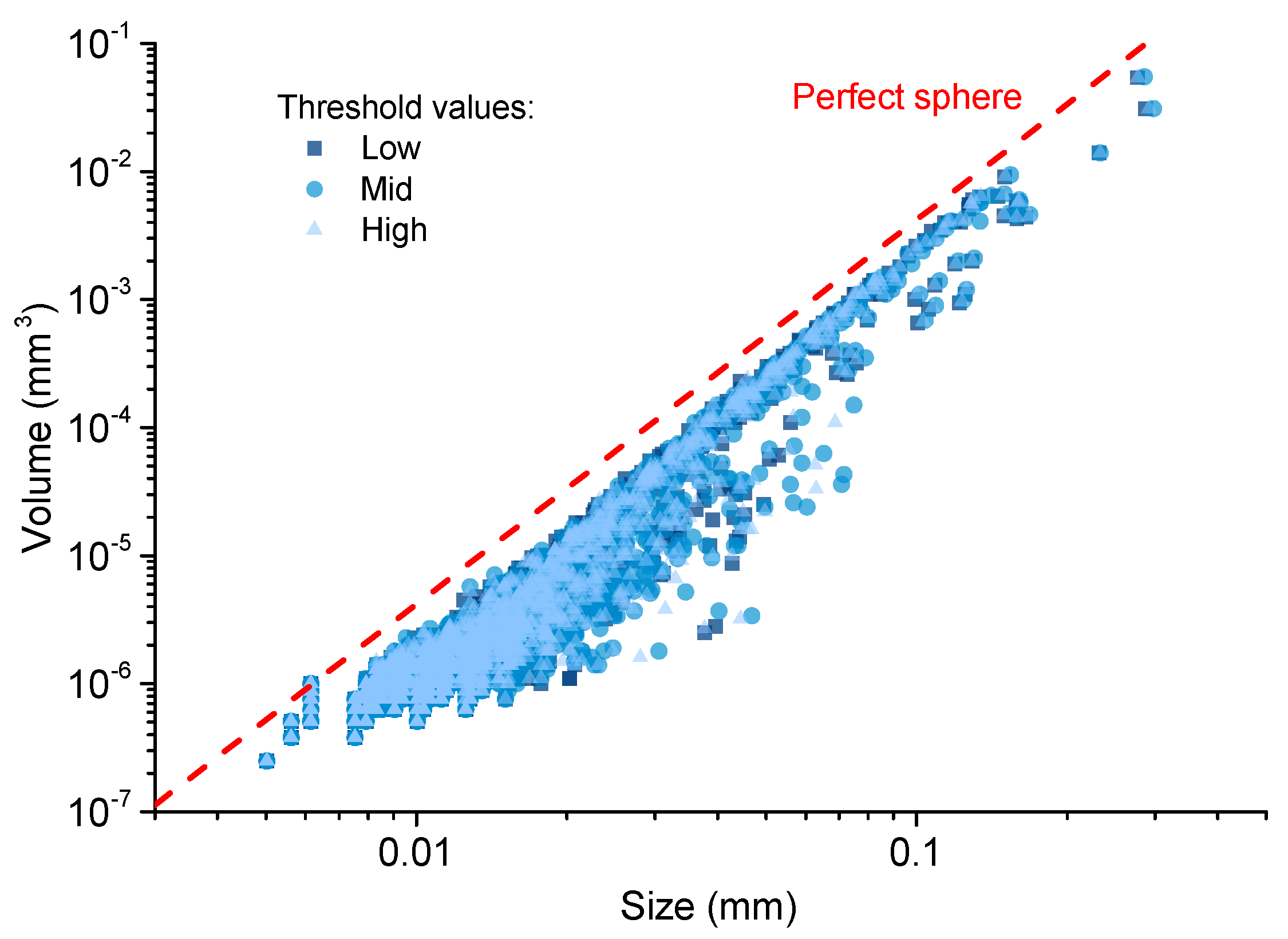
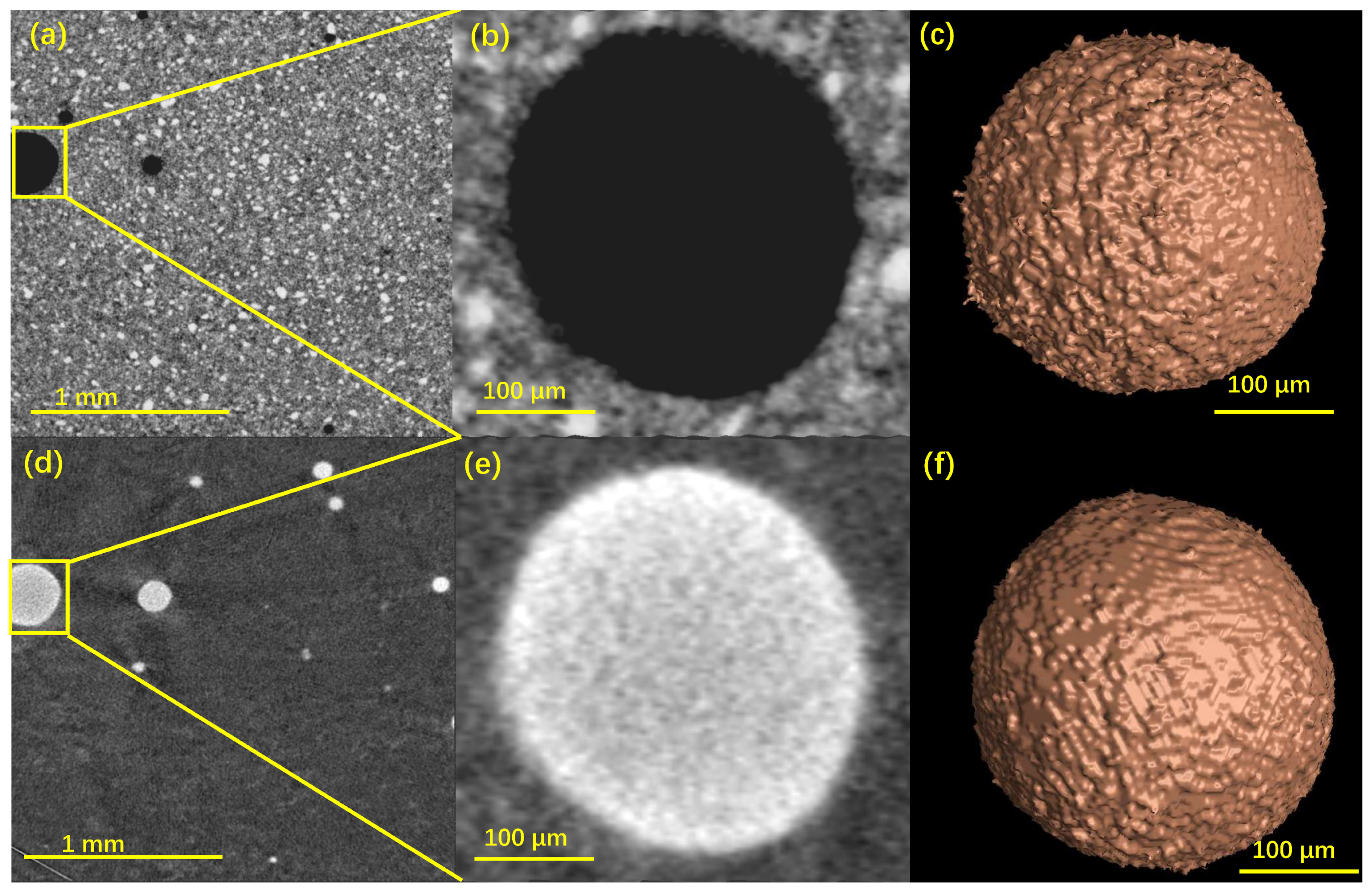
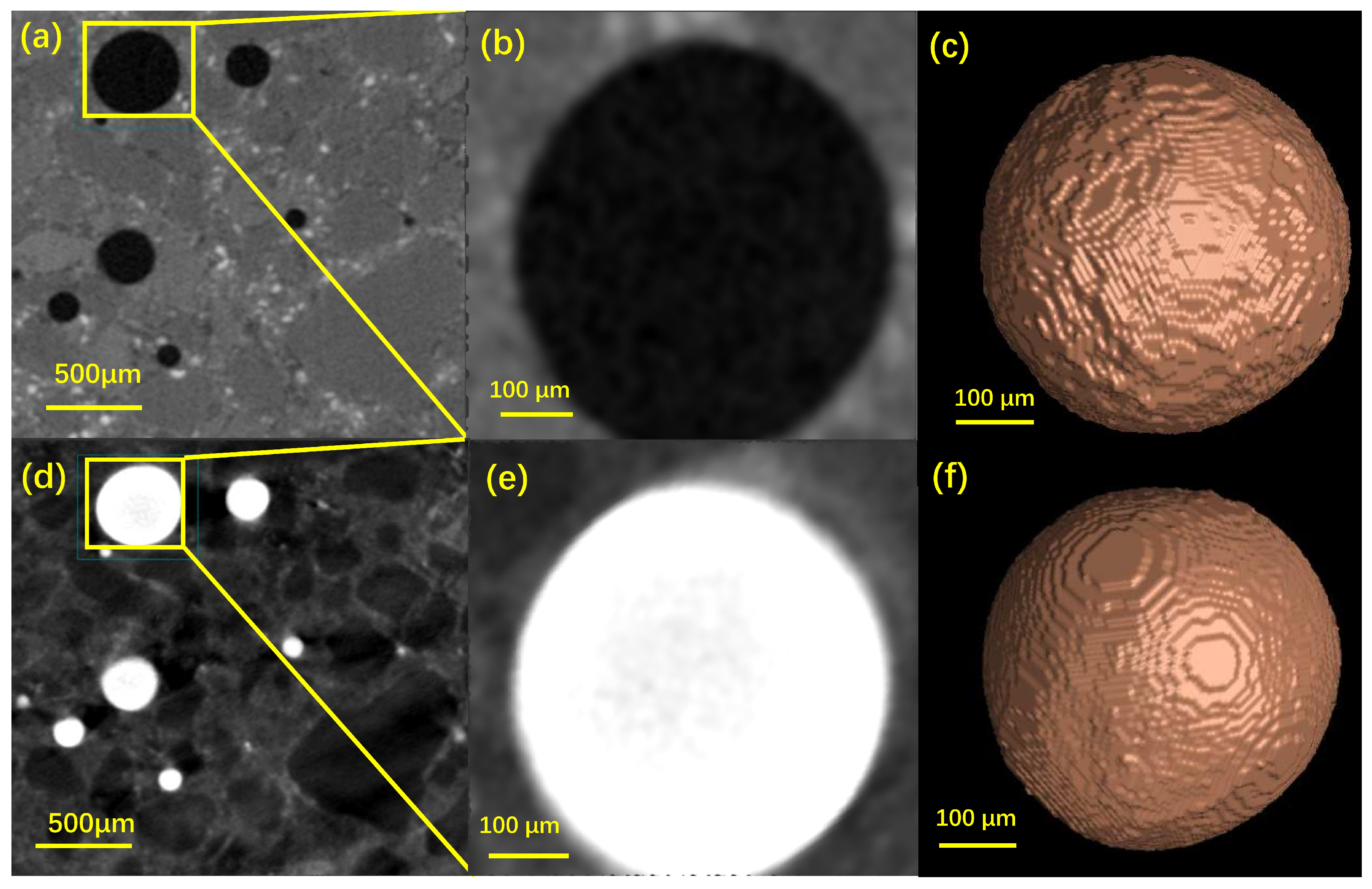
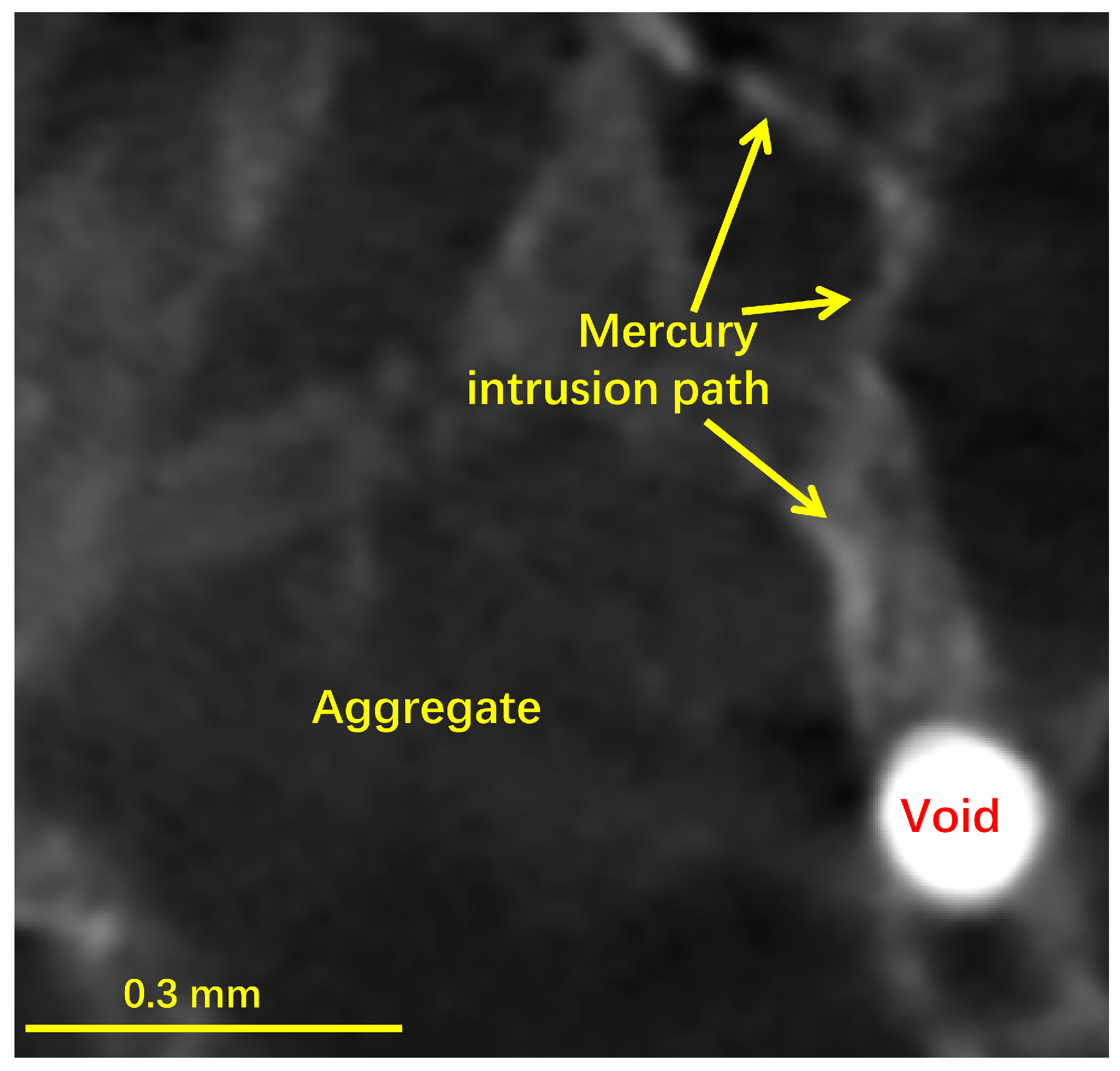
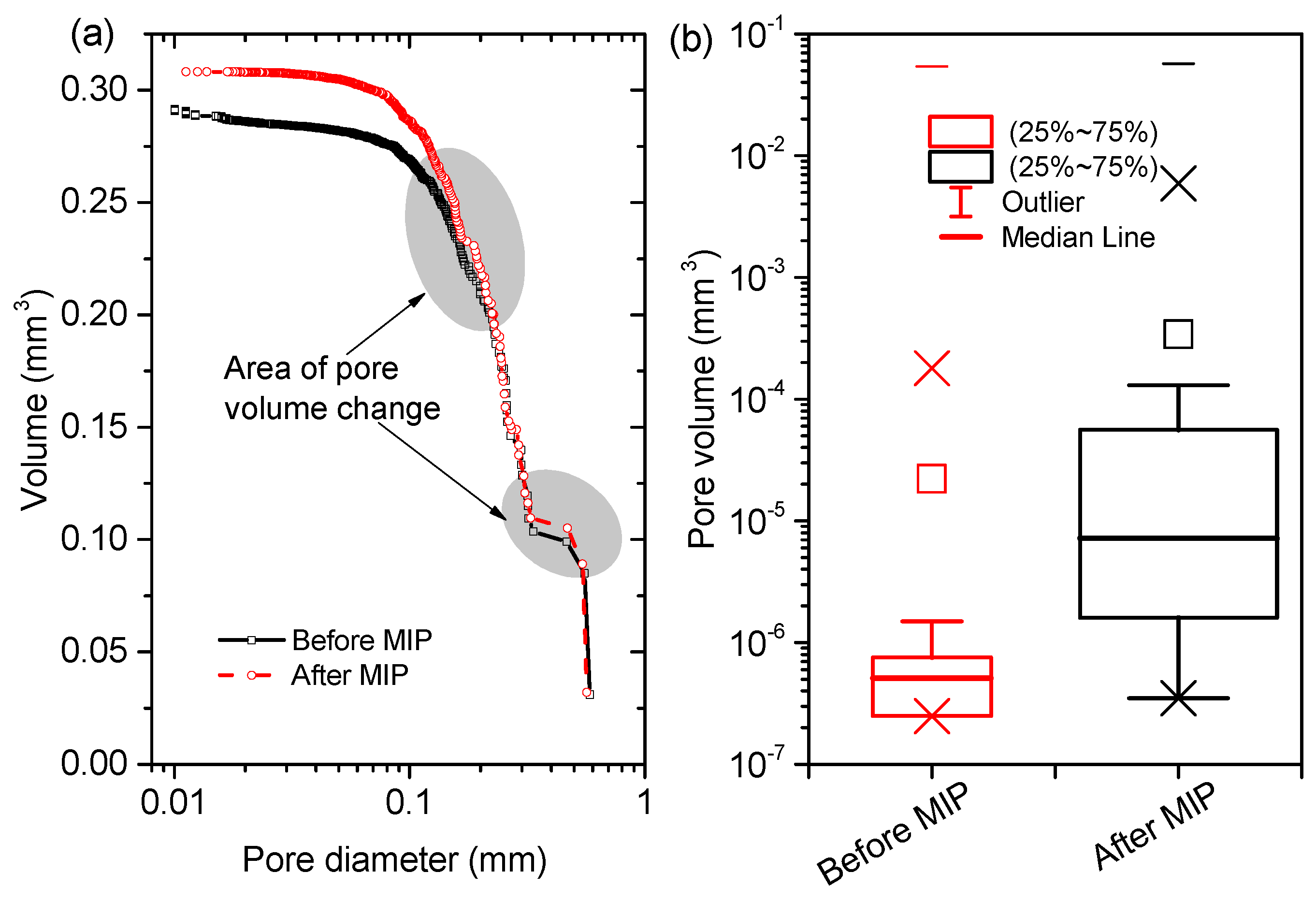
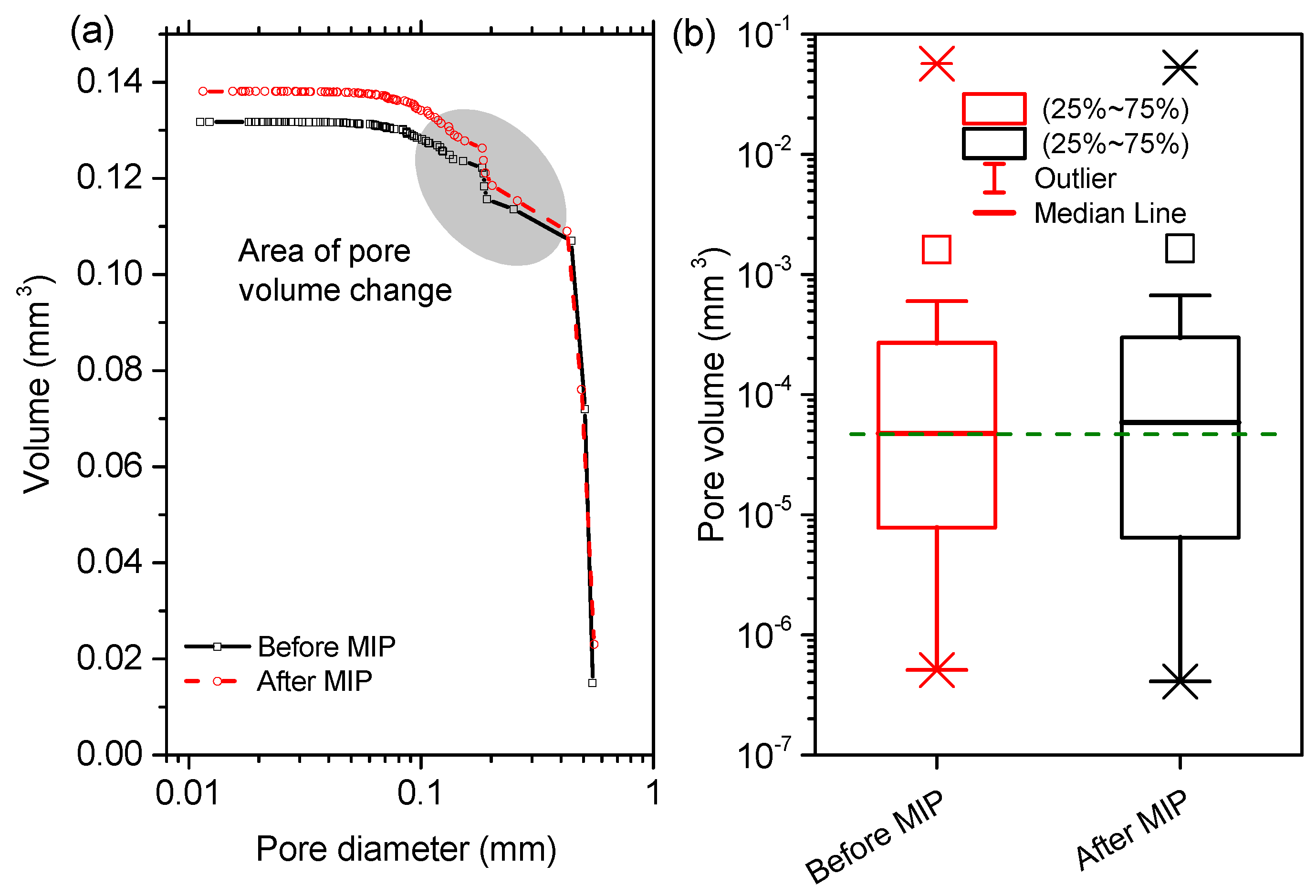
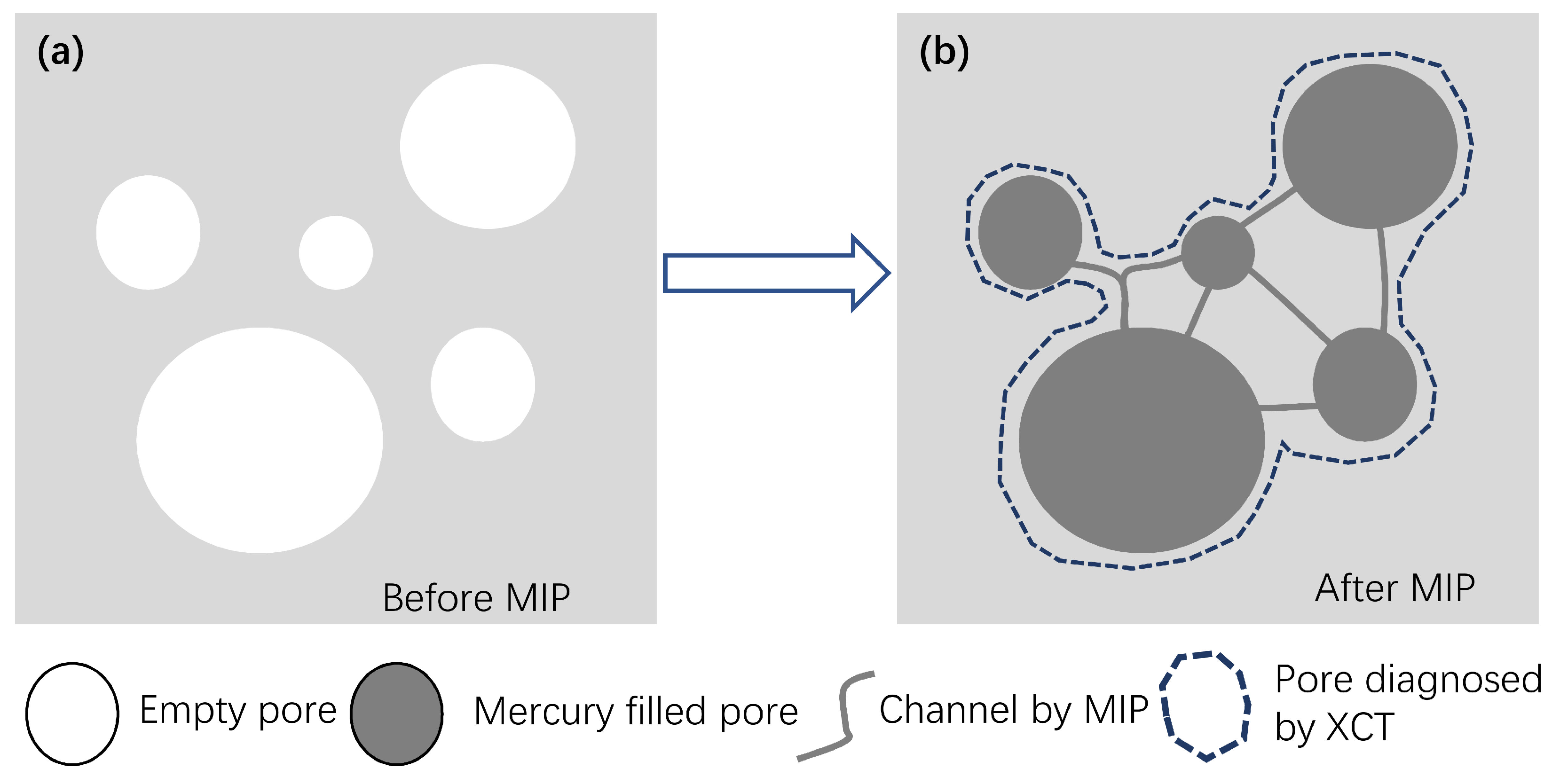
| Oxides | Content (%) | Minerals | Content (%) | Physical Properties | Value |
|---|---|---|---|---|---|
| 21.68 | 57.34 | Density (g/mL) | 3.10 | ||
| 4.80 | 18.09 | Specific area (m/kg) | 345 | ||
| 3.70 | 6.47 | Mean size (m) | 11 | ||
| 64.90 | 11.25 | ||||
| 2.76 | Others | 6.04 | |||
| 0.29 | |||||
| 0.56 | |||||
| 0.93 |
| Condition | Voltage (KeV) | Pixel Resolution (m) |
|---|---|---|
| Before MIP (Pre-MIP) | 150 | 5.02 |
| After MIP (Post-MIP) | 100 | 5.60 |
| Sample | Total Porosity (%) | Volume-Median Pore Size (nm) | Specific Surface Area () | Threshold Pore Size (nm) |
|---|---|---|---|---|
| Paste | 20.0 | 66.1 | 12.3 | 76.5 |
| Mortar | 15.1 | 85.1 | 9.3 | 76.9 |
© 2019 by the authors. Licensee MDPI, Basel, Switzerland. This article is an open access article distributed under the terms and conditions of the Creative Commons Attribution (CC BY) license (http://creativecommons.org/licenses/by/4.0/).
Share and Cite
Wang, X.; Peng, Y.; Wang, J.; Zeng, Q. Pore Structure Damages in Cement-Based Materials by Mercury Intrusion: A Non-Destructive Assessment by X-Ray Computed Tomography. Materials 2019, 12, 2220. https://doi.org/10.3390/ma12142220
Wang X, Peng Y, Wang J, Zeng Q. Pore Structure Damages in Cement-Based Materials by Mercury Intrusion: A Non-Destructive Assessment by X-Ray Computed Tomography. Materials. 2019; 12(14):2220. https://doi.org/10.3390/ma12142220
Chicago/Turabian StyleWang, Xiaohu, Yu Peng, Jiyang Wang, and Qiang Zeng. 2019. "Pore Structure Damages in Cement-Based Materials by Mercury Intrusion: A Non-Destructive Assessment by X-Ray Computed Tomography" Materials 12, no. 14: 2220. https://doi.org/10.3390/ma12142220
APA StyleWang, X., Peng, Y., Wang, J., & Zeng, Q. (2019). Pore Structure Damages in Cement-Based Materials by Mercury Intrusion: A Non-Destructive Assessment by X-Ray Computed Tomography. Materials, 12(14), 2220. https://doi.org/10.3390/ma12142220






